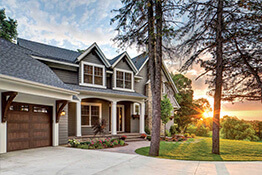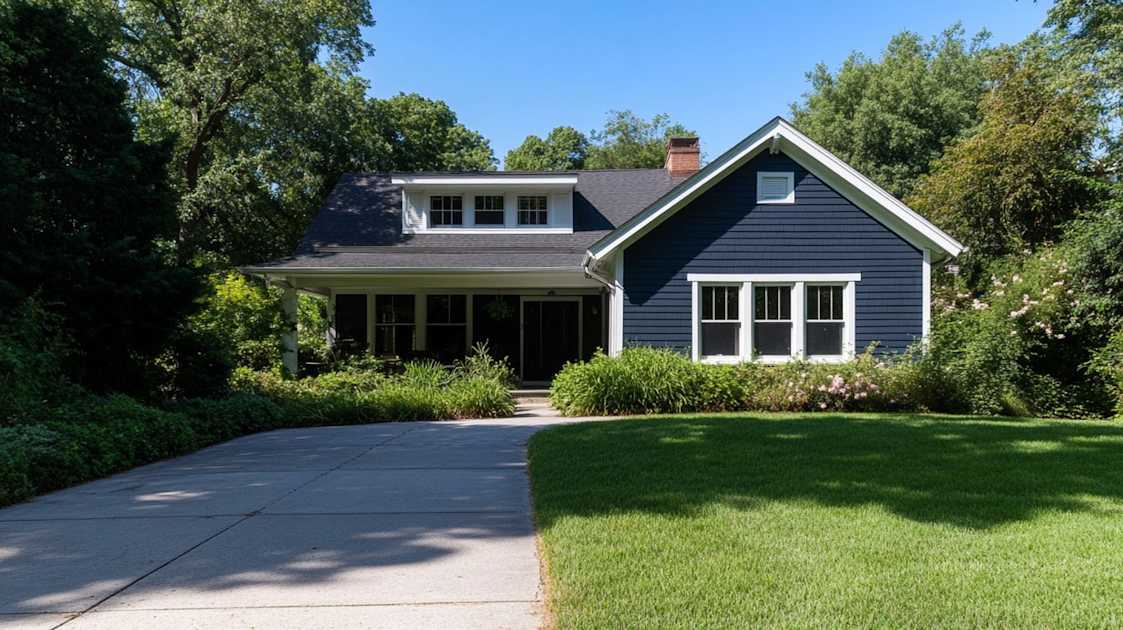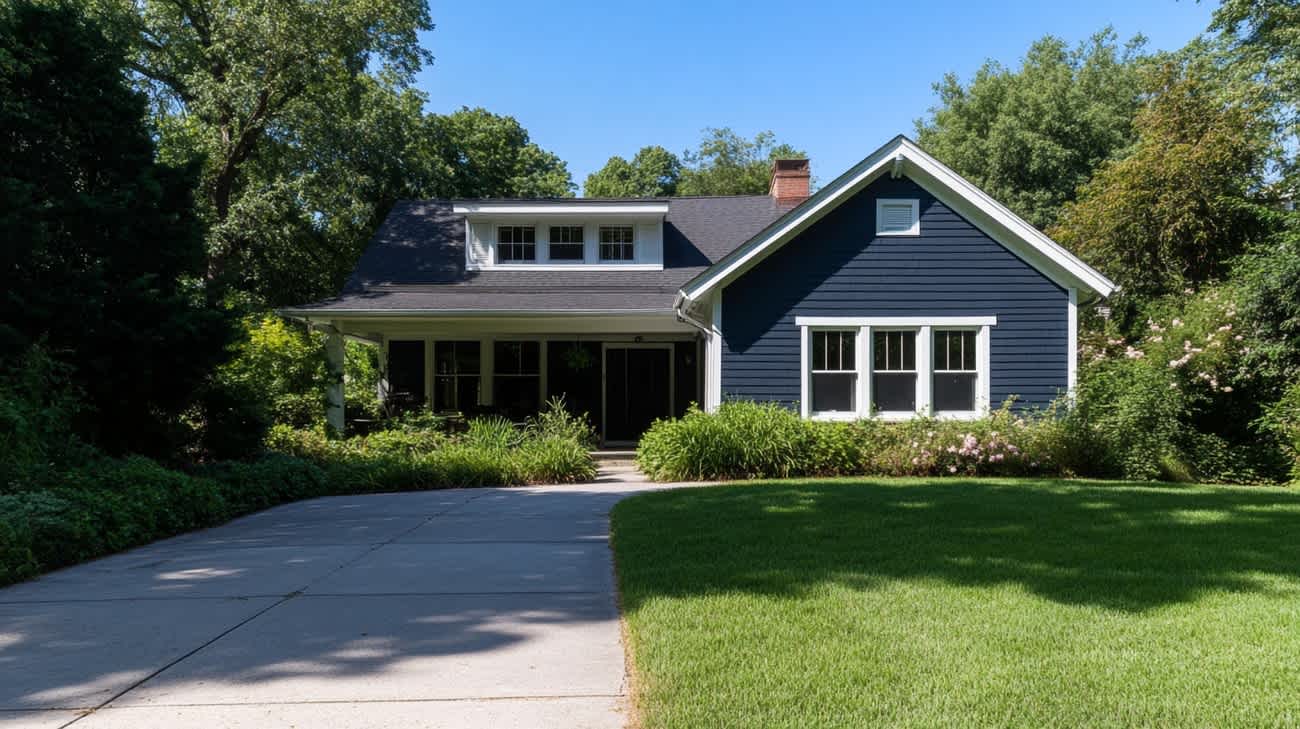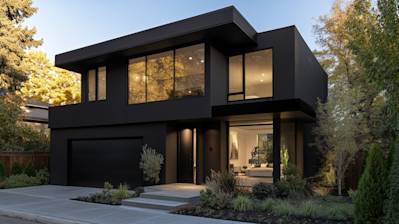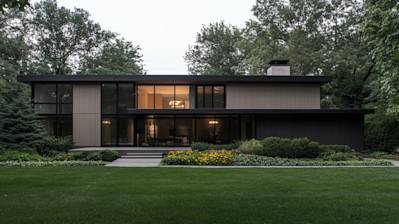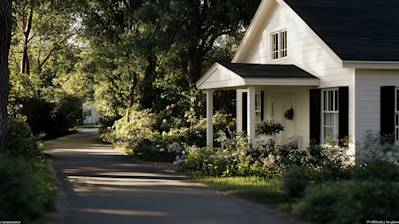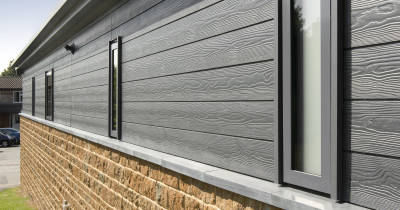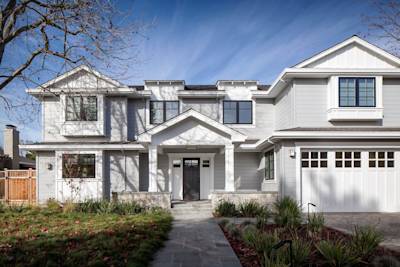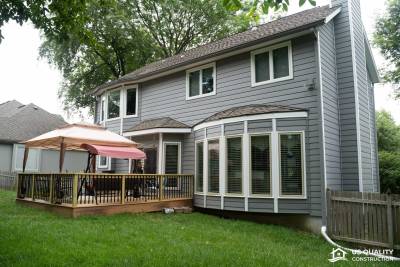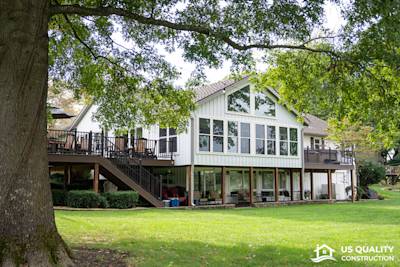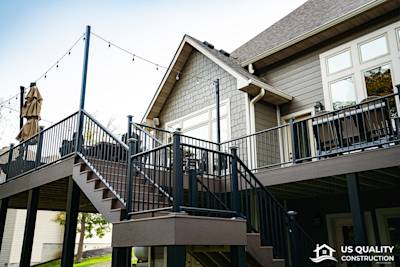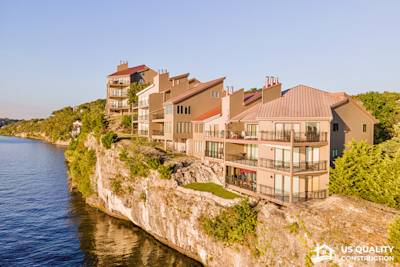Outfitting your home with the proper exterior trim is a significant decision and not something homeowners should take lightly. A superior quality choice widely recognized in the home improvement industry is Hardie trim, a product designed by James Hardie. This article takes you on a comprehensive journey of understanding Hardie trim—its features, benefits, and application.
What is Hardie Trim?
Hardie trim comes from the house of James Hardie, a respected name in the home improvement industry. It is made of fiber cement, a robust material that blends the durability of cement with the flexibility of wood and the smooth finish of vinyl. Often used for home exteriors, Hardie trim is prevalent for its practical and aesthetic advantages.
Features of Hardie Trim
Detailing and durability are key aspects of any trim, and Hardie trim takes these features to new zeniths. Here are some standout characteristics:
- Aesthetic Versatility: Hardie trim boards are available in a variety of styles, sizes, and color Plus options, ensuring you find the perfect match for your home's exterior.
- Durability: Due to its robust fiber cement composition, Hardie trim significantly outlasts traditional wood and is resistant to freezing temperatures, moisture, pests, and fire.
- Weatherproof: Hardie trim is engineered for Climate, which means it's specifically designed to withstand the weather conditions in your location.
- Low Maintenance: Hardie trim requires less maintenance compared to wood and vinyl alternatives.
The Many Benefits of Using Hardie Trim
Hardie trim adds significant advantages over traditional trim materials. The following points highlight these:
- Hardie trim is remarkably durable, offering a longer lifespan and more excellent value for money.
- Its resistance to common issues like moisture, pests, and fire provide extra protection for your home.
- Unlike wood, Hardie trim does not require regular upkeep, making it a low-maintenance choice.
- It can even boost the resale value of your home, thanks to its durability and high-quality appearance.
Hardie Trim Installation Process
The installation of Hardie trim follows a detailed procedure to ensure durability and superior finish:
- Preparation: Clear the area where the trim will be installed, ensuring there's a clean, flat surface. It's essential to remove any previous trim, scraps, and debris.
- Cutting and Sizing: Measure the area to figure out the size of the trim needed. Cut the Hardie trim board accordingly, ensuring accurate measurements for a perfect fit.
- Attachment: Fasten the trim to the house using corrosion-resistant nails, making sure they are flush with the board surface.
- Finishing: Finalize the installation with caulk to seal any joints, followed by a coat of paint to enhance its appearance.
Hiring Professional Installation Services for Hardie Trim
Considering the intricacies of the Hardie trim installation process, it is recommended to hire professional services. Professionals come equipped with both the expertise and the tools to ensure a flawless installation. This service ultimately saves you time, money, and removes room for error.
Hardie Trim: A Superior Option For Your Home Exterior
Hardie trim has successfully set itself apart from traditional wood and vinyl options owing to its superior features, benefits, and durability. Whether you aim to enhance the aesthetic appeal of your home, secure enhanced protection against harsh weather, or look for a maintenance-free alternative, Hardie trim covers all these attributes.
A home is a precious possession—one that reflects your taste, style, and indeed, your hard work. When you are investing in something as essential as exterior trim, you want to go for the best available. Hardie trim fits that bill with its robustness, versatility, and longevity.
Choosing Hardie trim is thus a decision that you will not regret. It assures quality, durability, aesthetics at decent price points. It is indeed the smarter choice for the smart homeowner!
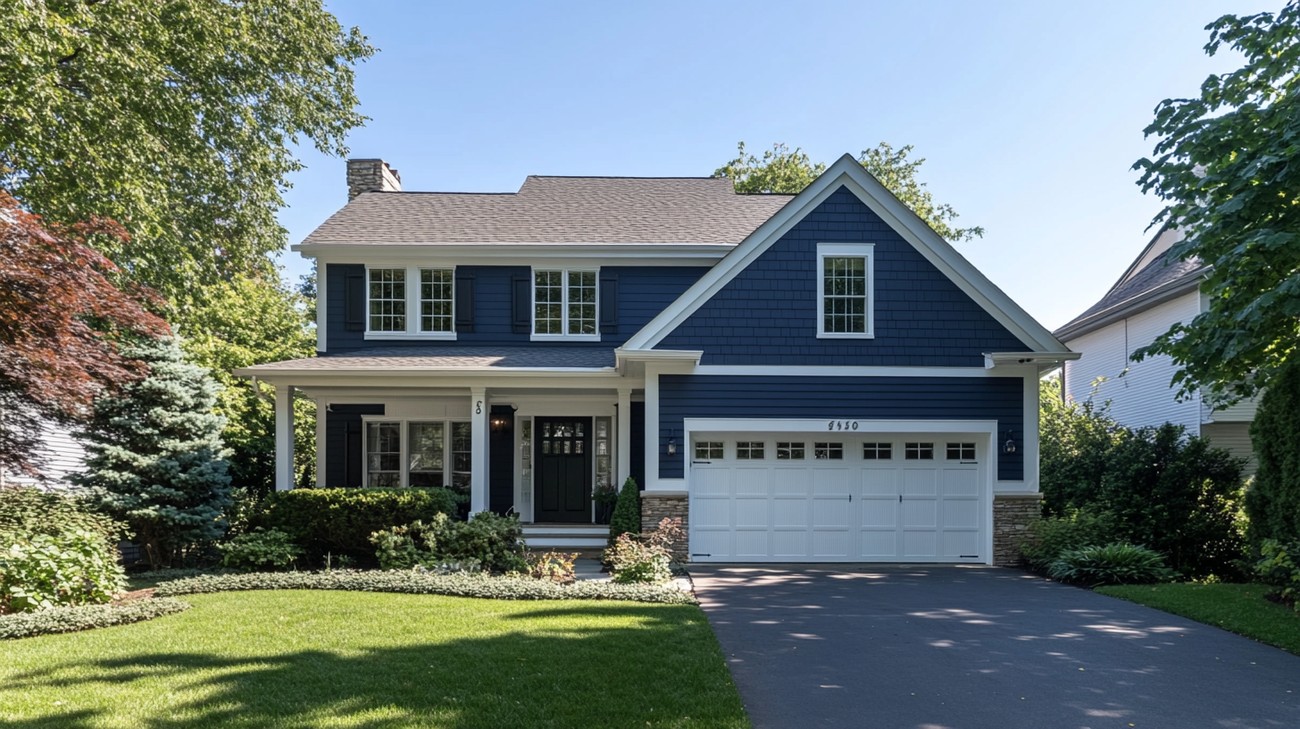
Frequently Asked Questions about Hardie Trim
Is Hardie trim colorfast?
Yes, Hardie trim is extremely colorfast. The ColorPlus® Technology used in the manufacture of Hardie trim ensures that the color is baked into the board. This leads to a vibrant, alluring color that resists fading, even with a prolonged exposition to harsh weather conditions.
Can I paint Hardie trim?
Yes, you can absolutely paint Hardie trim! If you want to change the color of your Hardie trim, all you need to do is ensure it's clean and dry before applying a primer. Then, you can paint over the primer with a high-quality exterior grade paint of your choice. However, make sure to follow the painting guidelines provided by James Hardie for a fantastic and long-lasting finish.
What is the durability of Hardie trim?
Durability is one of the key strengths of Hardie trim. It's engineered to last, featuring an outstanding resistance to moisture, rot, fire, pests, and weather. Plus, Hardie trim comes with a limited warranty, which adds to its overall durability and lifespan.
Does Hardie trim require maintenance?
Maintaining your Hardie trim is a relatively simple task. Unlike wood, it does not need to be repainted frequently. A gentle clean with a soft brush and mild detergent mixed with water is generally enough to keep your Hardie trim in good condition. Additionally, always check for any signs of damage and address them promptly to ensure the longevity of the trim.
Is Hardie trim environmentally friendly?
Yes, one of the beauties of Hardie trim is its environmental friendliness. James Hardie uses ecologically sustainable practices in their manufacturing process. Plus, because Hardie trim doesn't need to be replaced as frequently as traditional wood trim, it creates less waste, contributing to less landfill.
Is Hardie trim available in different styles?
Absolutely! Hardie trim is available in a variety of styles and designs, providing a multitude of options to enhance the aesthetics of your home. It comes in various widths, lengths, and thicknesses, and is also available with a smooth or textured finish.
Can I use Hardie trim for interior applications?
While Hardie trim is primarily intended for exterior applications, it isn't uncommon to see it employed in interior projects. Given its durability and appealing look, some homeowners and designers choose to incorporate it in interior designs for an added aesthetic touch.
How does Hardie trim compare to vinyl or wood trim?
Hardie trim is a cut above the rest when compared to vinyl or wood trim. Unlike vinyl, it doesn't warp or melt under extreme temperatures and compared to wood, it's resistant to rot, fire, and pests, reducing maintenance requirements. Moreover, its durability and design flexibility give it an edge, making it a favorite choice among many homeowners and contractors.

Pros of Hardie Trim
Durability
Resistance to Weather Conditions
Hardie trim is known for its incredible durability. The material resists damage from extreme weather conditions, including hot, humid climates, and harsh winters. You don’t have to worry about Hardie trim warping, buckling, or rotting due to exposure to the elements.
Longevity
Another aspect of Hardie Trim's durability is its longevity. These materials are built to last and require less frequent replacement compared to traditional wood trims.
Resistance to Insects and Pests
Hardie trim is also notable for its resistance against pests and insects, which is a common concern with traditional wood trim options. Termites and other wood-boring insects pose no threat to this material, improving the overall lifespan of the trim.
Fire Resistance
Specifically designed to resist fire, Hardie trim is a great choice for areas with high fire risk because it won't ignite when exposed to direct flame, and it won't contribute to a fire's spread.
Maintenance
Low Maintenance
One of the greatest benefits of Hardie trim is it's low maintenance. Unlike wood, it does not need regular painting or staining—just a simple wash down with a garden hose every so often will keep it looking fresh and new.
No Need for Repairs
Because of the trim’s superior durability, homeowners will rarely, if ever, need to repair it, saving both time and money.
Appearance
Versatility in Design
Hardie trim comes in a variety of styles, sizes, and colors, making it suitable for almost any type of exterior design. You can find something that perfectly complements your home's architectural style, whether traditional or modern.
Consistent Appearance Over Time
Unlike wood, which can fade and weather over time, Hardie trim maintains its appearance years after installation. So, your house can look as good as new for years to come.
Cons of Hardie Trim
Installation
Complexity of Installation
One potential drawback to Hardie Trim is that its installation can be quite difficult and labor-intensive. It requires special tools and techniques that are unfamiliar to some DIY enthusiasts and even some professionals. This may necessitate the hiring of a skilled contractor and result in increased costs.
High Labor Costs
Because it requires professional installation, the overall cost of using Hardie trim can be quite high. This includes not just the cost of the trim itself, but also labor and installation costs.
Weight
Heavy Weight
Hardie Trim is significantly heavier than other trim materials, like vinyl or wood. This doesn't only affect installation, but can also impact shipping costs and the structural requirements of your home.
Price
More Expensive
Hardie trim is generally more expensive than other alternatives on the market. While the initial cost may be higher, many homeowners find this offset by reduced maintenance costs and the product's durability.
Environmental Impact
Manufacturing Process Environmental Impact
The manufacturing process for Hardie trim requires a significant amount of energy and contributes to carbon emissions. While the product itself is highly durable, its production process may not be as environmentally friendly as other natural materials.
In conclusion, Hardie trim has its own set of unique advantages and drawbacks. Its durability, resistance to weather, pests, and fire, and low maintenance are huge selling points. However, the high cost, complex installation, and the product's weight may be disadvantages for some homeowners.

Myths and Misconceptions about Hardie Trim
The construction industry encompasses a myriad of materials, techniques, and products that can at times be confusing for many people, even for some seasoned builders. When it comes to the specifics of siding and trim for houses, one particular product that often gets shrouded by myths and misconceptions is Hardie Trim. Below, we expose and explicate some of the most common Hardie trim myths.
Misconception 1: Hardie Trim Is Hard to Install
Hardie Trim Requires Special Tools
One major misconception about Hardie trim is that it requires specialized tools for installation. Some people might think you need a high-powered diamond-tipped circular saw to cut through the material, for example. In reality, Hardie trim can be cut using a regular circular saw with a carbide-tipped blade. Of course, professionals may prefer to use a dust-reducing saw to minimize mess but it's not a must-have to part the trim.
Hardie Trim Installation Is Too Complicated for DIY
This is yet another myth many hold around Hardie trim. It stems from the belief that any installation involving this type of trim is too convoluted to be handled by the average do-it-yourself enthusiast. However, the fact is Hardie trim can be as easy to install as any other type of trim, provided one follows the correct instructions and regulations. There are also loads of resources available, including video tutorials, that break down the installation process step by step.
Misconception 2: Hardie Trim Is Not Durable
The longevity and durability of Hardie trim is another area clouded by misconceptions. In fact, many people tend to assume that just because it's made from fiber cement, it might not be as durable as other traditional trims like wood or aluminum. This is quite far from the truth.
Hardie Trim Cracks Easily
A common misconception is that Hardie trim cracks easily. This idea is often as a result of observing improper installation and neglect after the trim has been installed. When properly installed and cared for, Hardie trim is incredibly resistant to cracking. Unlike wood, Hardie trim does not expand or contract with changes in moisture and temperature preventing the chance of cracking.
Hardie Trim Is Not Resistant to Pests
This is a fallacy. Actually, Hardie trim boasts an amazing resistance to pest infestation including termites and carpenter ants, something you can't say about traditional wood trim. Its composition doesn't attract pests and is borate treated for further protection.
Misconception 3: Hardie Trim Is More Expensive Than Other Trims
Another myth about Hardie trim is that it is more expensive than other types of trim. It is true that the initial cost of Hardie trim might be higher than some other options, but this is a shortsighted view.
Maintenance Costs Are High
When factoring in the cost of Hardie trim, people often forget to consider maintenance cost. Hardie trim's maintenance costs are significantly lower over time. Unlike wood, which requires regular painting and sealing, Hardie trim is extremely low-maintenance. Its color lasts longer reducing the need for regular paint jobs.
It Isn't Worth The Initial Investment
This isn’t true. Taking into account its durability, low-maintenance nature, and pest resistance, the idea that Hardie trim isn't a good investment is a total fiction. It may be more expensive upfront, but in the long run, it actually saves homeowners money on repairs, maintenance, and replacement costs.
Misconception 4: Hardie Trim Is Bad for the Environment
Hardie Trim Is not Eco-friendly
Another common misconception about Hardie trim is that it's not eco-friendly. People believe this because the product is made from cement, which is often associated with high CO2 emissions. This overlooks the fact that Hardie trim uses a mixture of cement and cellulose fibers, which are sourced from sustainable forests.
Hardie Trim Contributes To Landfill
Contrary to popular belief, Hardie trim helps to reduce landfill waste. Since it is much more durable than many other forms of trims such as vinyl or wood, it doesn't have to be regularly replaced, resulting in less waste over time.
In conclusion, Hardie trim, like many other building materials, is privy to its share of myths and misconceptions. It's always essential to do your due diligence and seek credible information when choosing the materials for your construction project.
Summary
Hardie Trim truly stands out for being long-lasting and practically unassailable by harsh weather conditions. If you're looking for a product that provides real endurance, Hardie Trim should be on your radar. Not only does it offer durability, but its aesthetic appeal is a great bonus. With a variety of options to complement your home’s siding, it makes for a project that combines both function and style.
We've witnessed the transformative power of Hardie Trim when used for home improvement projects. It's a product that offers top-of-the-line composite materials wrapped up in a neat, attractive package. Both homeowners and contractors can appreciate its ease of installation and its resistance to damage caused by common quandaries like termites and rot.
When delving into the realm of exterior home renovation, few products can match Hardie Trim for its marriage of aesthetics and durability. The product adds that perfect finishing touch, providing a polished, professional look to your siding job. In the end, it not only enhances the curb appeal of your place, but also assures you of the safety and longevity of your investment.
About US Quality Construction
US Quality Construction is your friendly neighborhood construction company based right in the heart of Kansas City, MO. We fondly consider KC our home, and we are committed to enhancing its beauty and strength with top-tier construction services. With years of experience under our hard hats, we have expertly nailed everything from minor handyman repairs to mammoth commercial projects. We pride ourselves on a job well done, always striving to exceed your expectations. With US Quality Construction, what we build is not just structures, but also long standing relationships rooted in integrity, reliability and superior workmanship. So if you're in KC and need a trustworthy hand with your construction needs, remember, we're just around the block!
Tags: siding, exterior, home maintenance,
